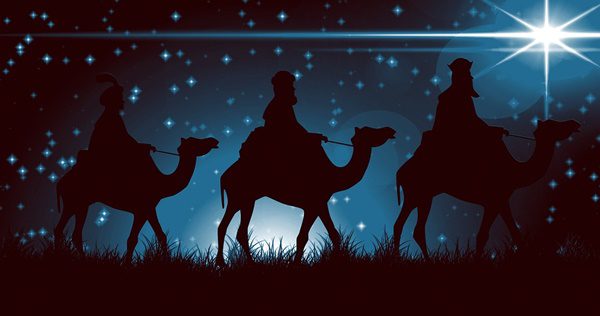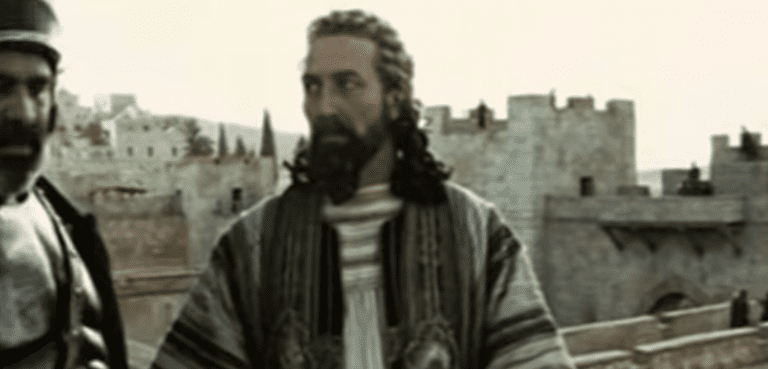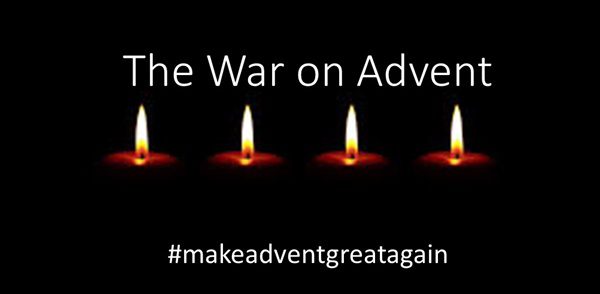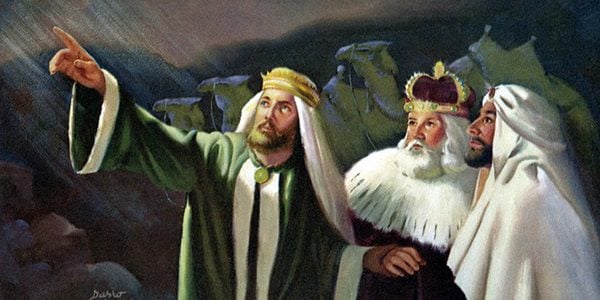The following is based on a sermon I preached on January 7, 2018 at Clackamas United Church of Christ, in Milwaukie Oregon.
Just before Christmas, Harper One’s “News and Pews” email introduced me to an intriguing book title – The Revelation of the Magi. The book has a translation of an ancient story about the Magi written by Christians around the third to fourth century. The story of the Magi as told in the Gospel of Matthew is a fascinating tale, but only 12 verses long. The Revelation of the Magi, on the other hand, is 32 chapters long!
And, for the most part, it follows Matthew’s story, but adds in a lot of extra details. The story in Matthew’s Gospel is pretty weird, but The Revelation of the Magi brings the weirdness up a few levels. But if we can get past the weirdness, I think this ancient story about the Magi also has a lot to teach us about our faith life today.
The Spiritual Journey
First, like Matthew’s version, much of this ancient story revolves around the mysterious star that guides the Magi to the Christ child. As if the story in Matthew of the star moving as it guides the Magi from the east to Bethlehem wasn’t weird enough, this story claims that the star came down from the sky to talk to the Magi. The star then took on the form of a child and the Magi began to discover that this star is actually the Son of God in the form of a child who is already with them. Weird stuff.
But I think this story is so important because much of modern spirituality claims that we need to go to God. Spirituality often says you need to make a big effort to find God, who is somewhere out there. Like the Magi, you may even need to travel across the world to find God. But this story says something slightly different. Yes, you may need to go on a spiritual journey. But God is already with us on the journey. You don’t have to go anywhere to meet God or to find God. Because as the star tells us, God is already present here with us. God is present with us in nature – in a star, in the bread and grape juice of communion, as Moses discovered in a burning bush, as Elijah discovered in a still small voice, as that Magi discovered in a baby born 2,000 years ago, and, as that baby would teach us when he grew up, in our fellow human beings.
The Cosmic Christ
A second point this ancient story makes is that the Star tells the Magi that the Son of God, the Christ, is universal. The Cosmic Christ is a term increasingly in use that refers to this universality. No one particular group owns the Son of God. In fact, the Star says that the spirit of Christ is found in every religion throughout the world.
This second point is so important because much of religion is based on rivalry. Religions tend to debate the question “Who holds the truth about God?” The answer tends to be that my particular religion holds the truth. But this ancient Christian story tells us that we don’t have to play that game anymore. In fact, the question, “Who holds the truth?” isn’t a very good question. The Star tells us that we don’t hold the truth about God. The truth holds us. The truth is that God is present in our religion and is present in all religions and, I’d say, in non-religions. God is universal, and that truth shines through the star in this story.
God the All-Vulnerable
But there’s also a particular religious message that the star delivers to the Magi. And this is the third point. While Christ is found in every religion, each religion has a particular message. And the early Christians understood something about Christianity’s particular message about God maybe better than we modern Christians do. The star tells the Magi to not doubt that God enters the world through a little vulnerable baby. In fact, it says to not doubt that God came to humanity in a “small, humble, and unworthy human.” It also says that God in the baby Jesus will appear to them as poor, imperfect, frail, lowly, and unsightly.
Now, I have no idea what the baby Jesus looked like. Most babies I’ve seen are pretty cute. Although, I’ve seen a few babies that could be described as “unsightly.” You know, you say to the parents “Oh…Yeah…Your baby is…cute.” Of course, all babies associated with our church are adorable, but maybe Jesus was a pretty ugly baby.
But the authors of the Revelation of the Magi knew something that all the ancient Christians knew so well. You see, throughout most of human history, we have thought that God was the extreme of what we humans value. So God must be the most beautiful. But here the Magi tell us that God in the Christ child seems “lowly” and “unsightly.” In his ministry, Christ tells us that God is with those on the margins, those seen as lowly and unsightly by dominant culture.
And we have generally thought God is all-powerful and so we associated God with powerful people – particularly rich rulers who dominate through violent force. But the early Christians knew that Jesus flipped that understanding of God upside down. God is no longer seen as the all-powerful. Because of Jesus, God is seen as the all-vulnerable. Because the idea that God is all-powerful is so engrained in the human psyche, it’s difficult to transition to seeing God as all-vulnerable. But because of Jesus, the ancient Christians insisted on this point.
The Magi and Nonviolent Political Disobedience
Which leads me to the last point I want to make. The Gospel of Matthew and the Revelation of the Magi both talk about the ruler at the time of Jesus’ birth – king Herod. Both stories say that Herod tried to deceive the Magi by telling them that when they find the baby they should come back to him and tell him where the baby is so that Herod could also worship the baby boy born king of the Jews.
But the star told the Magi about Herod’s fear of this rival king and his evil scheme to kill the baby, and so they went back home another way.
And here’s the point. The Magi refused to participate in Herod’s political violence. Herod gave them an order and they refused to obey it. Instead, they obeyed God and in doing so they committed an act of nonviolent civil disobedience. Why? Because they knew God was best shown in a nonviolent and vulnerable baby, not in the violent domination of king Herod.
I think the Magi’s nonviolent civil disobedience is a good model for us. There have been bad politicians throughout history. Sometimes you have to stay and say “No.” Sometimes you have to disobey political rulers. That’s part of the journey of the Magi, and it may be part of our journey, too.
Saying No to Political Violence and Saying Yes to God
But the Revelation of the Magi tells us that the Magi didn’t stop at saying “No.” They didn’t get stuck in simply disobeying Herod. They gave their lives to something so much bigger than Herod. When they went home, they told their people about the love of God revealed to them in a vulnerable and unsightly little baby.
God called them to a bigger mission – the mission of divine love. Sometimes we have to say “No” to the Herod’s of our world. We say “No” to the Herods of the world so that we can say “Yes” to God. Yes to including all people in the realm of God. Yes to caring for the weak and the vulnerable. Yes to God’s radical, all-inclusive and nonviolent love.
Because, you see, I don’t know if the Magi literally followed a moving star halfway around the world. But I do know this – The star tells us to trust that God’s love is bigger than our fears. God is bigger than our religion. God is bigger than bad politicians. God is bigger than cancer, bigger than disease, bigger than divorce, bigger than family conflicts, bigger than our darkness, and as the cross and resurrection teach us, bigger even than death. The Magi trusted that God is bigger and their trust sent them on a great adventure to discover the Christ child and share Christ’s love with the world. May we join together in that great adventure.
Image: Pixaby.
Stay in the loop! Like Teaching Nonviolent Atonement on Facebook!












